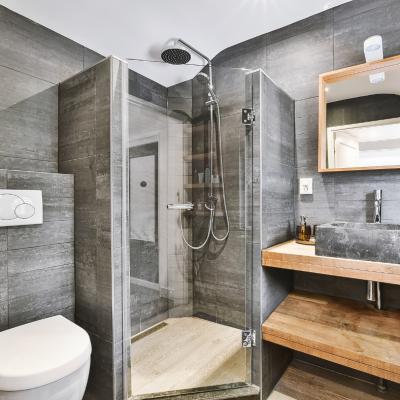Room Cabinets: A Complete Guide to Maximizing Storage and Style

Room cabinets are essential elements in modern interior design, combining practicality with style. They serve as organized storage solutions while enhancing the aesthetics of a space. Whether it’s a bedroom, living room, or home office, the right cabinet design helps reduce clutter and create a more functional environment.
In today’s homes, space optimization has become a priority. Room cabinets are no longer just furniture pieces but integral parts of the overall layout. They define how efficiently a space can be used and how cohesive the room feels. From built-in wall cabinets to freestanding wardrobes, these storage options bring balance, order, and beauty to everyday living spaces.
Types of Room Cabinets and Their Uses
There are several types of room cabinets, each designed to serve a specific purpose. Understanding these categories helps homeowners choose options that fit both their functional and aesthetic needs.
Bedroom cabinets are among the most common, often designed as wardrobes or closet systems. They provide ample space for clothing, accessories, and personal items. Modern designs include sliding-door wardrobes, modular closets, and built-in wall units that make the best use of vertical and corner spaces.
Living room cabinets focus more on display and organization. These may include wall-mounted cabinets, TV units, and storage consoles that help keep the space tidy while showcasing decorative pieces. Many homeowners also opt for floating cabinets to achieve a minimalist look and free up floor space.
Office cabinets serve a more practical purpose, offering storage for documents, office supplies, and equipment. Designs range from sleek metal cabinets for contemporary offices to wooden storage units that blend with home décor.
Lastly, multi-purpose cabinets are becoming increasingly popular for studio apartments and small homes. These versatile pieces can serve as both decorative and functional furniture, providing storage without sacrificing style.
Materials and Finishes: Finding the Right Look and Durability
The choice of materials for room cabinets greatly influences their appearance, durability, and maintenance. Solid wood remains a timeless favorite for its natural grain and strength, making it ideal for classic or rustic interiors. Options such as oak, walnut, maple, and teak are popular for their resilience and aesthetic warmth.
Engineered wood materials, including MDF and particleboard, offer a more budget-friendly alternative without compromising design flexibility. These materials can be easily laminated or painted in a variety of finishes. For modern homes, laminated or lacquered surfaces create a polished, easy-to-clean look.
Glass-front cabinets add a touch of sophistication, especially in living rooms or offices where decorative items are displayed. Metal-framed cabinets bring an industrial edge, while mirror-finished panels are ideal for bedrooms, as they visually expand the space and add brightness.
Color also plays a significant role in achieving the desired mood. Light-toned finishes such as white, beige, or light oak make rooms feel spacious and airy, while darker tones like espresso, charcoal, or navy add depth and luxury.
Design Tips for Maximizing Space and Functionality
When planning room cabinet layouts, efficiency and accessibility are key. Built-in cabinets are excellent for maximizing small spaces, as they can be customized to fit walls, alcoves, or underused corners. They create a seamless look that blends with the architecture, reducing visual clutter.
In bedrooms, installing cabinets up to the ceiling helps maximize vertical space, while modular drawers keep smaller items neatly organized. Adding adjustable shelves or hanging rods allows for better flexibility as storage needs change.
In living rooms, combining closed cabinets with open shelving creates a balanced look. Closed sections hide clutter, while open shelves display decorative accents or personal collections. Floating cabinets can make a room appear larger, while corner cabinets utilize awkward spaces effectively.
For offices, consider cabinets with both open and closed compartments to store files, books, and devices. Cable management systems can also be integrated into the design for a cleaner, more organized workspace.
Lighting is another important design feature. Adding LED strips or spotlights to cabinets enhances visibility and highlights key areas. This small touch adds warmth and sophistication to any room.
Maintenance and Longevity
Proper maintenance keeps room cabinets looking and functioning their best. Regularly dust surfaces and clean with a soft cloth and mild cleaning solution to prevent buildup. For wooden cabinets, occasional polishing helps maintain the finish and protect against moisture.
Avoid exposing cabinets to direct sunlight or excessive humidity, as these can cause fading or warping. In humid climates, installing a dehumidifier or ensuring proper ventilation can extend the life of wooden cabinets. For glass or mirror-front cabinets, a simple glass cleaner keeps them spotless and reflective.
Hinges, handles, and drawer runners should also be checked periodically for wear and tear. Replacing or tightening them promptly ensures smooth operation and prevents long-term damage.


